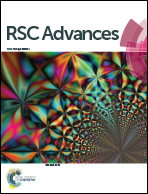Bio-augmentative volatile fatty acid production from waste activated sludge hydrolyzed at pH 12
Abstract
Although many pretreatment methods are employed to enhance the hydrolysis of waste activated sludge (WAS), the bioconversion of soluble complex substrates needs improvement to produce higher volatile fatty acids (VFAs). This study isolated a new strain of Citrobacter freundii, which was first used as a VFAs-producing strain under alkaline pH. A bio-augmentative test achieved the highest total production of VFAs (2425.2 mg COD per L) and offered a preferred fermentation method, which yielded more acetic acid (65.0%) than a sludge-only test (50.1%). Moreover, the bio-augmentative test could produce evident synergistic effects on the utilization of soluble complex substrates between WAS and the C. freundii strain. Furthermore, the addition of carbohydrates takes precedence over the adjustment of pH in the production of VFAs, which suggested that the regulation of the ratio of protein to carbohydrates (PN/PS) was more practical and more convenient. Polymerase chain reaction-denaturing gradient gel electrophoresis (PCR-DGGE) results revealed that the C. freundii strain was the dominant bacterial community in the bio-augmentative test and some indigenous species were affected due to competition for nutrients with C. freundii.


 Please wait while we load your content...
Please wait while we load your content...